This summer I bought a 20 mm 1.8 Lens and that is why I had the Opportunity to take some pictures of the Milky way several tims this summer. I took the lens with me to Greece and on several other nices spots here in Austria. It was a funny experience and a little bit different to the pictures I usually do but I really liked it and next summer season I will definitely try some more shots of the Milky way. Since I had some time today I tried some editing on some of the shots and these are the results. I already showed you the unedited work some time ago. I like the red color in the stars that I enhanced a little bit but most of the red is not directly from the stars but from an artificial light source down on the earth behind these trees that made this scene looking pretty cool. I darkened the picture and enhanced the saturation a little bit on these first pictures.
Next year when the Milky Way Season is back here on the northern Hemisphere I will try some new spots and some more differnt techniques. I will read some tips on Astro Photography now in winter to get even better results, at least I hope so. Now in winter the milky way is not so good visible on the northern hemisphere but better on the southern hemisphere. But still it should be visible and it is much more difficult to capture it. Maybe I can capture it in combination with some snow. This would be great. I am still a little hesitant about it.
When I think about all the stars that are visible here, and these are only a fraction of all stars that are out there - I cannot believe that we are alone in the universe. I am pretty sure live developed somewhere else too.
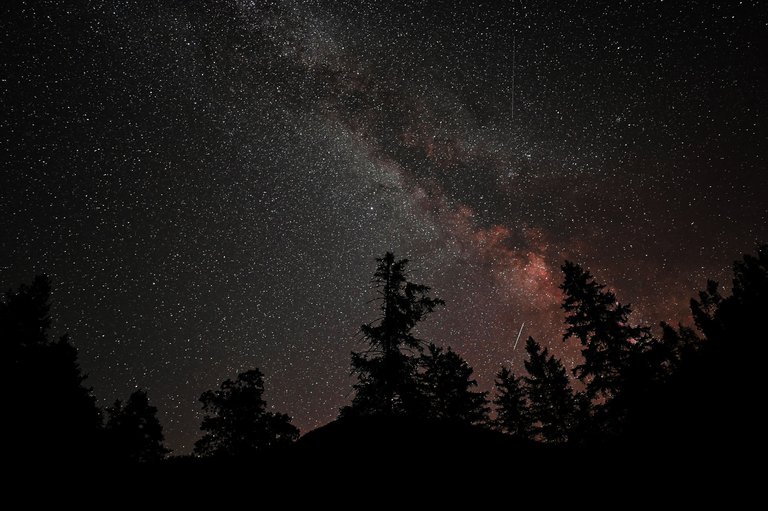
Milky Way behind the trees and mountains. Picture: Florian Glechner.
| Camera used | Nikon Z6II |
|---|---|
| Lens used | Nikor 20mm F1.8 lens |
| Filter used | none |
| Exposure Time | 20 Seconds |
| Aperture used | F1.8 |
| Focal Length | 20 mm |
| Time | 10:01 pm |
| ISO | 2000 |
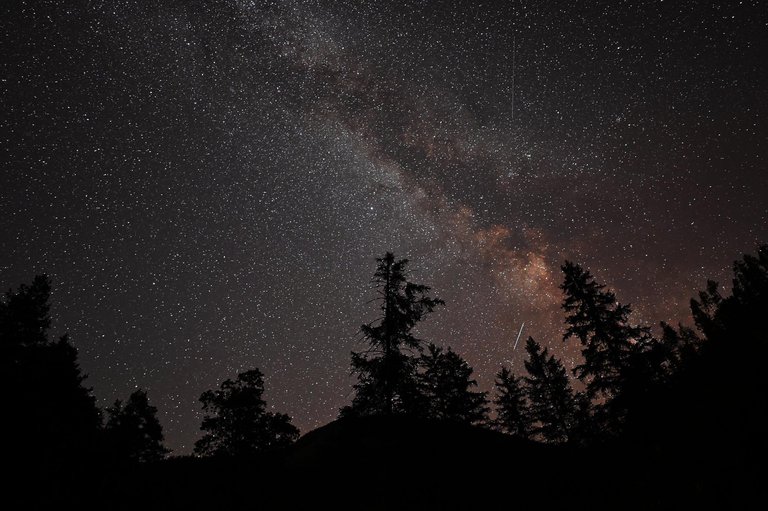
One of my first milky way picutures this year. Picture: Florian Glechner.
| Camera used | Nikon Z6II |
|---|---|
| Lens used | Nikor 20mm F1.8 lens |
| Filter used | none |
| Exposure Time | 20 Seconds |
| Aperture used | F1.8 |
| Focal Length | 20 mm |
| Time | 10:01 pm |
| ISO | 2000 |
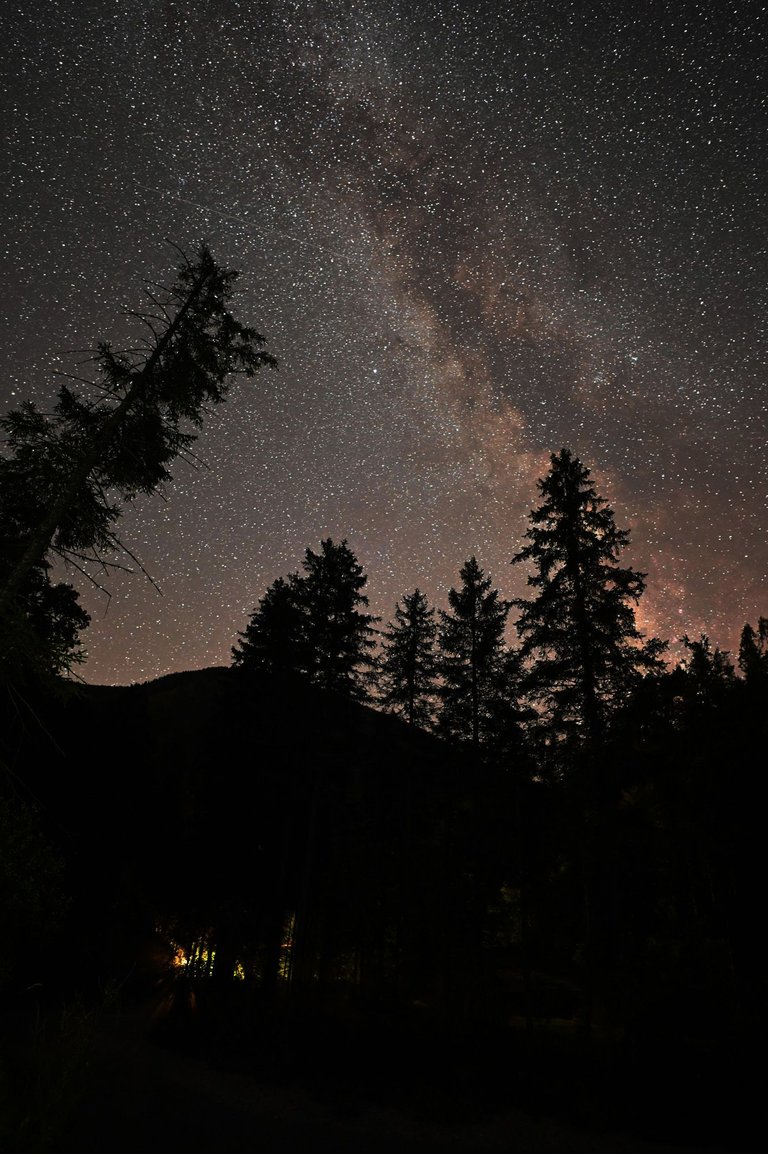
I like the dark Silhouettes of the trees in the foreground. Picture: Florian Glechner.
| Camera used | Nikon Z6II |
|---|---|
| Lens used | Nikor 20mm F1.8 lens |
| Filter used | none |
| Exposure Time | 20 Seconds |
| Aperture used | F1.8 |
| Focal Length | 20 mm |
| Time | 10:01 pm |
| ISO | 2000 |
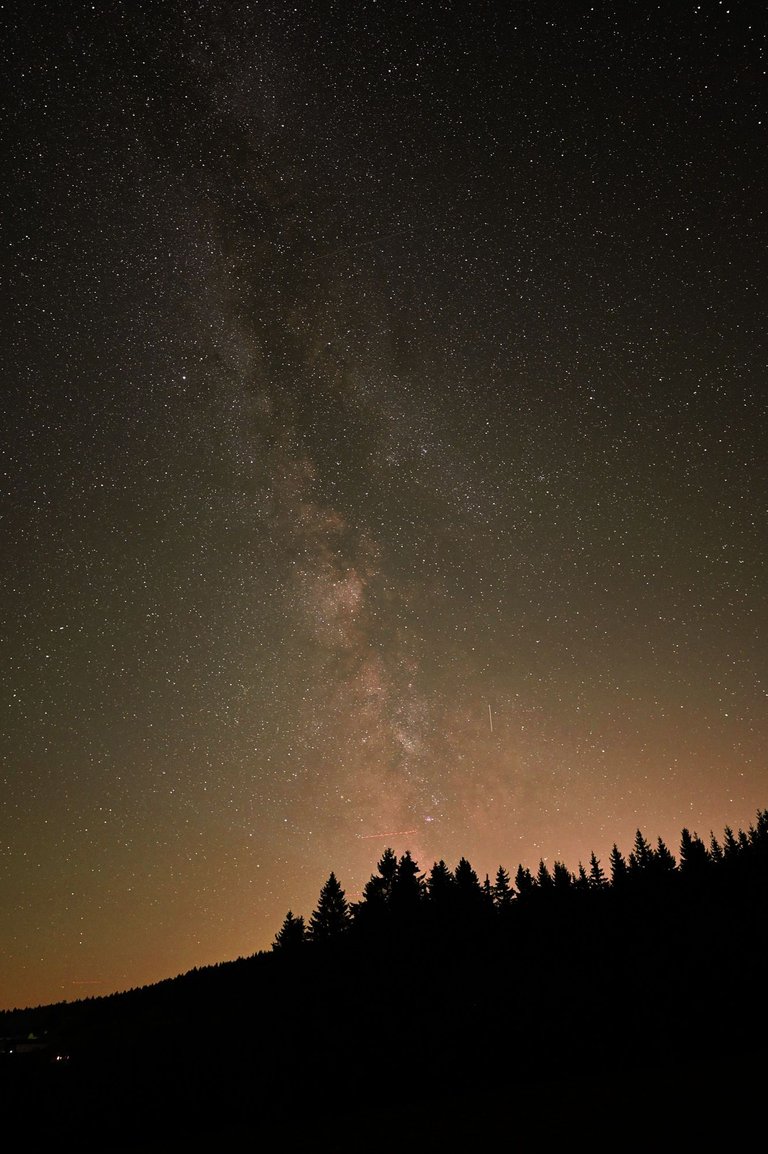
Unfortunately on many spots there is a lot of light pollution. Eventhough in the Alps, light makes it difficult to capture the milky way. Picture: Florian Glechner.
| Camera used | Nikon Z6II |
|---|---|
| Lens used | Nikor 20mm F1.8 lens |
| Filter used | none |
| Exposure Time | 20 Seconds |
| Aperture used | F1.8 |
| Focal Length | 20 mm |
| Time | 10:01 pm |
| ISO | 2000 |
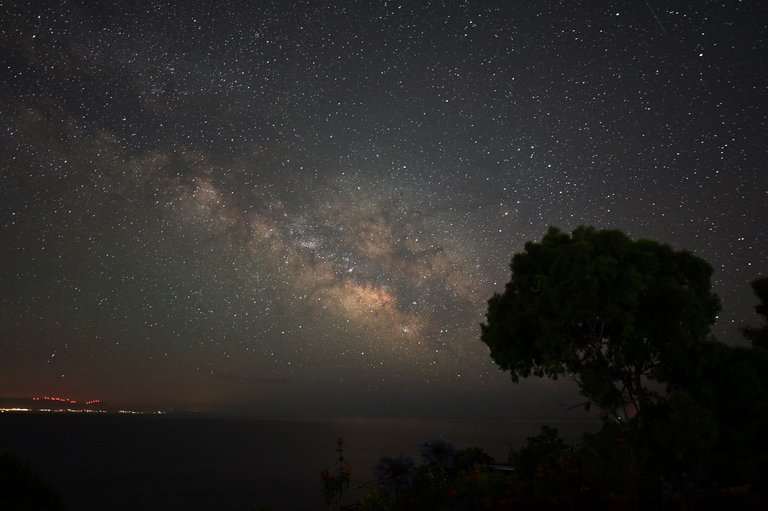
Also at an lonly spot in greece it is not so easy to capture the milky way. Picture: Florian Glechner.
| Camera used | Nikon Z6II |
|---|---|
| Lens used | Nikor 20mm F1.8 lens |
| Filter used | none |
| Exposure Time | 20 Seconds |
| Aperture used | F1.8 |
| Focal Length | 20 mm |
| Time | 10:01 pm |
| ISO | 2000 |
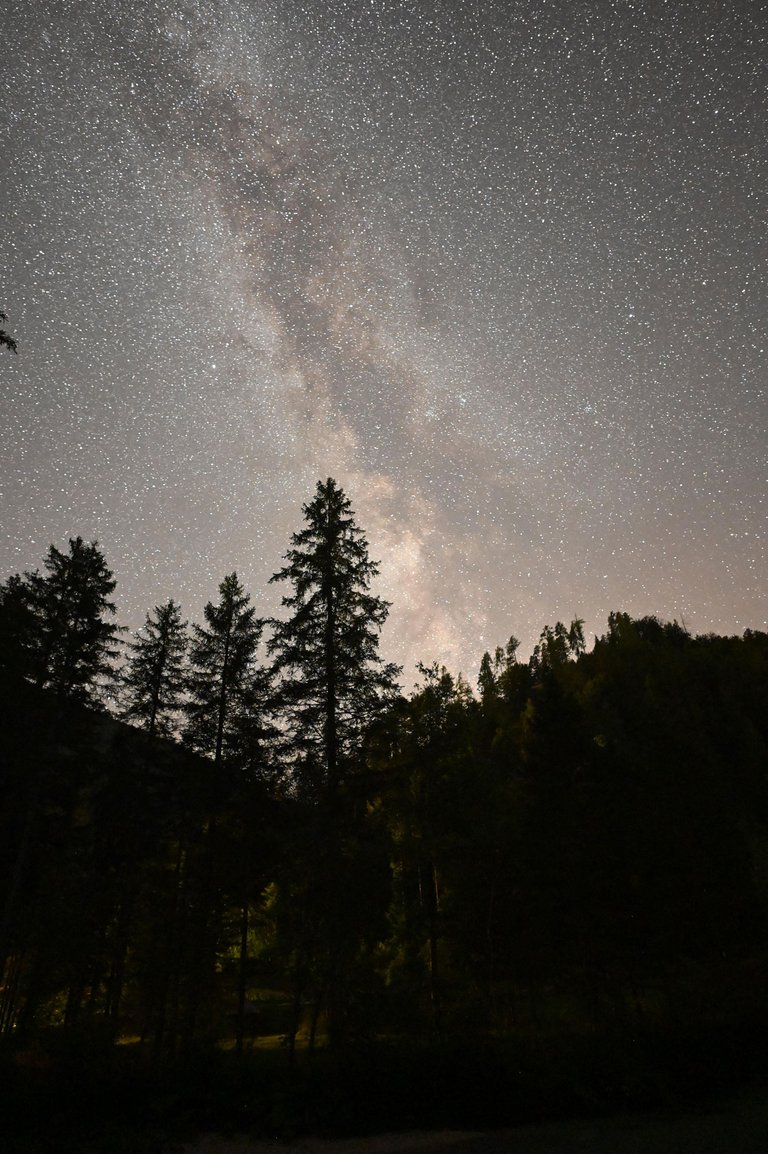
Some of the trees where enlighted by one small light from a house in the distance. Picture: Florian Glechner.
| Camera used | Nikon Z6II |
|---|---|
| Lens used | Nikor 20mm F1.8 lens |
| Filter used | none |
| Exposure Time | 20 Seconds |
| Aperture used | F1.8 |
| Focal Length | 20 mm |
| Time | 10:01 pm |
| ISO | 2000 |
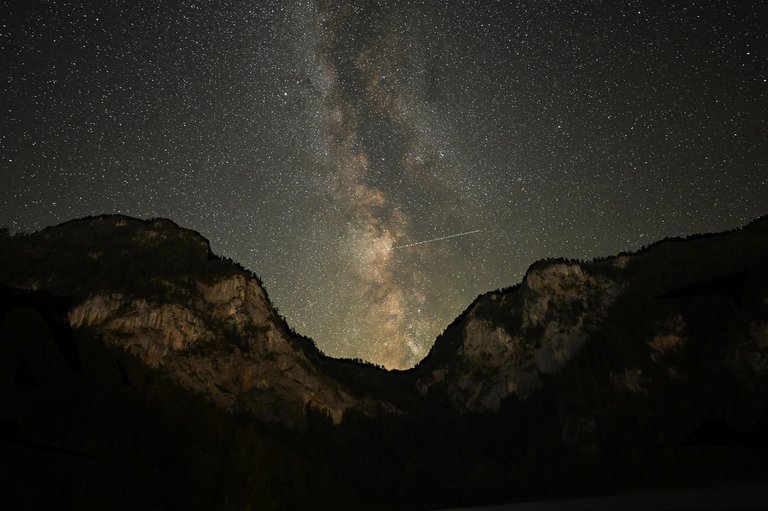
In the alps a portion of the milky way is often concealed by the mountains. Picture: Florian Glechner.
| Camera used | Nikon Z6II |
|---|---|
| Lens used | Nikor 20mm F1.8 lens |
| Filter used | none |
| Exposure Time | 20 Seconds |
| Aperture used | F1.8 |
| Focal Length | 20 mm |
| Time | 10:01 pm |
| ISO | 2000 |
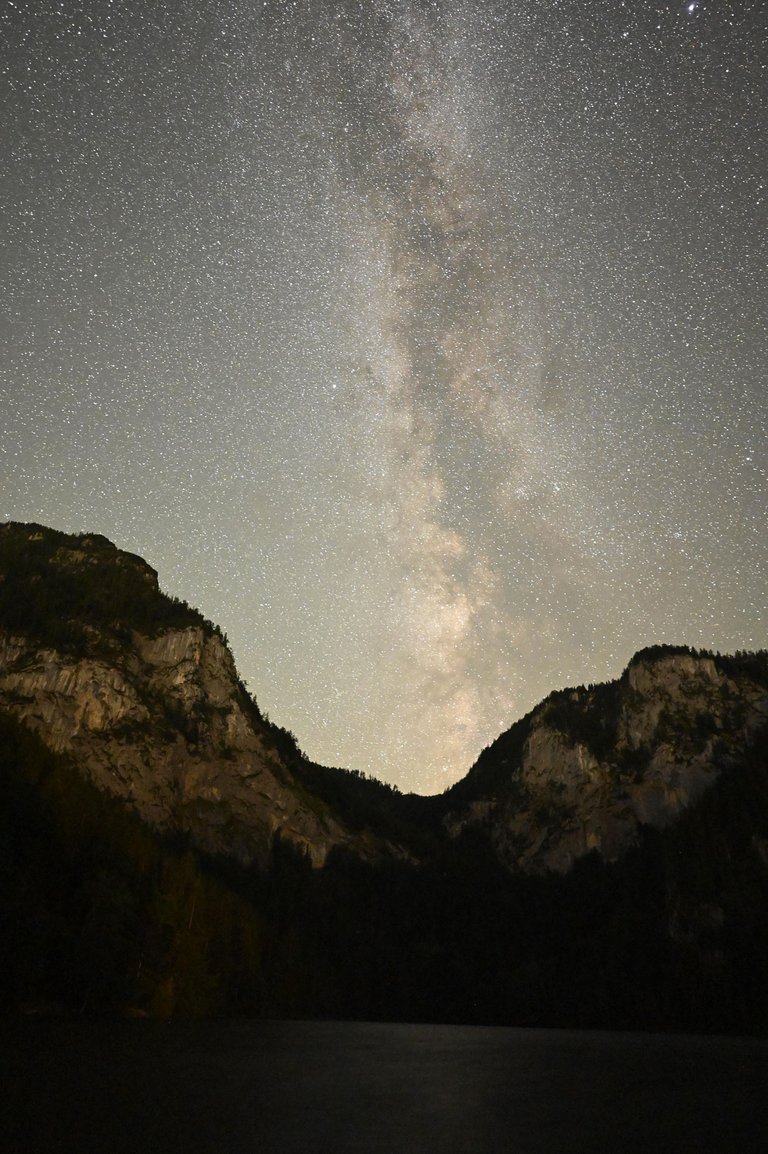
Milky Way. Picture: Florian Glechner.
| Camera used | Nikon Z6II |
|---|---|
| Lens used | Nikor 20mm F1.8 lens |
| Filter used | none |
| Exposure Time | 20 Seconds |
| Aperture used | F1.8 |
| Focal Length | 20 mm |
| Time | 10:01 pm |
| ISO | 2000 |
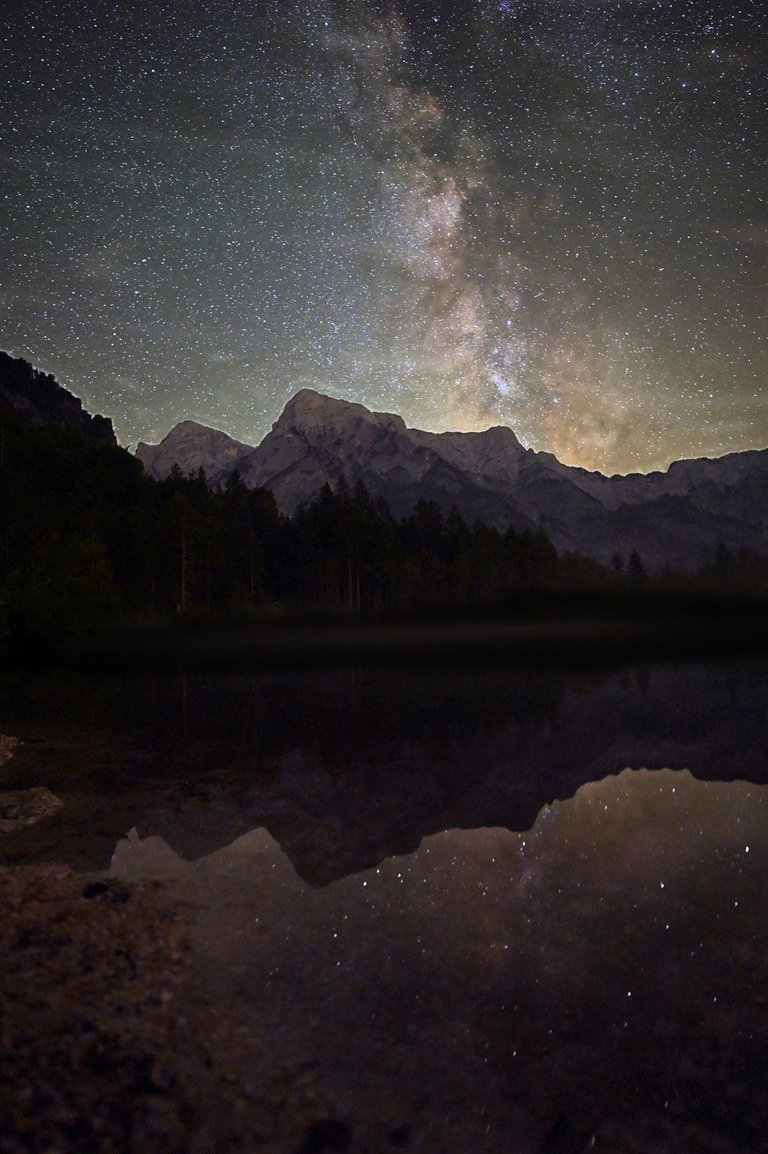
Milky Way at a mountain lake, with reflection. Picture: Florian Glechner.
| Camera used | Nikon Z6II |
|---|---|
| Lens used | Nikor 20mm F1.8 lens |
| Filter used | none |
| Exposure Time | 20 Seconds |
| Aperture used | F1.8 |
| Focal Length | 20 mm |
| Time | 10:01 pm |
| ISO | 2000 |
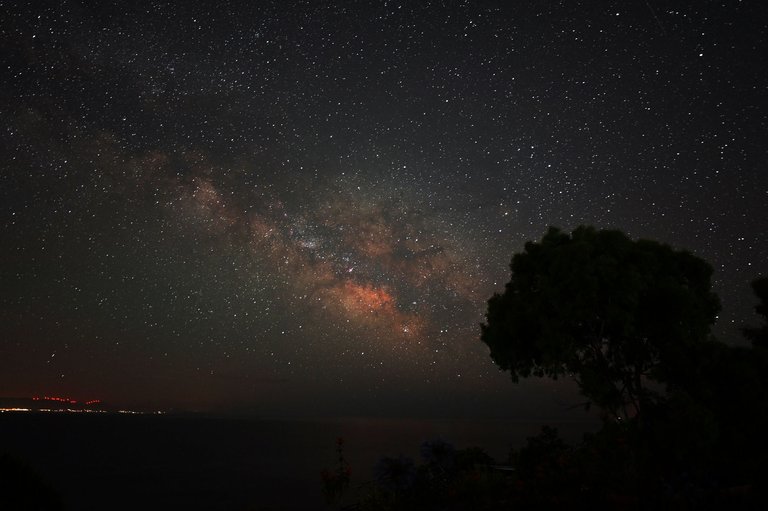
Distant lights mostly red turned the whole picture somehow in red. Picture: Florian Glechner.
| Camera used | Nikon Z6II |
|---|---|
| Lens used | Nikor 20mm F1.8 lens |
| Filter used | none |
| Exposure Time | 20 Seconds |
| Aperture used | F1.8 |
| Focal Length | 20 mm |
| Time | 10:01 pm |
| ISO | 2000 |

Milky Way in Greece in June last year. Picture: Florian Glechner.
| Camera used | Nikon Z6II |
|---|---|
| Lens used | Nikor 20mm F1.8 lens |
| Filter used | none |
| Exposure Time | 20 Seconds |
| Aperture used | F1.8 |
| Focal Length | 20 mm |
| Time | 10:01 pm |
| ISO | 2000 |
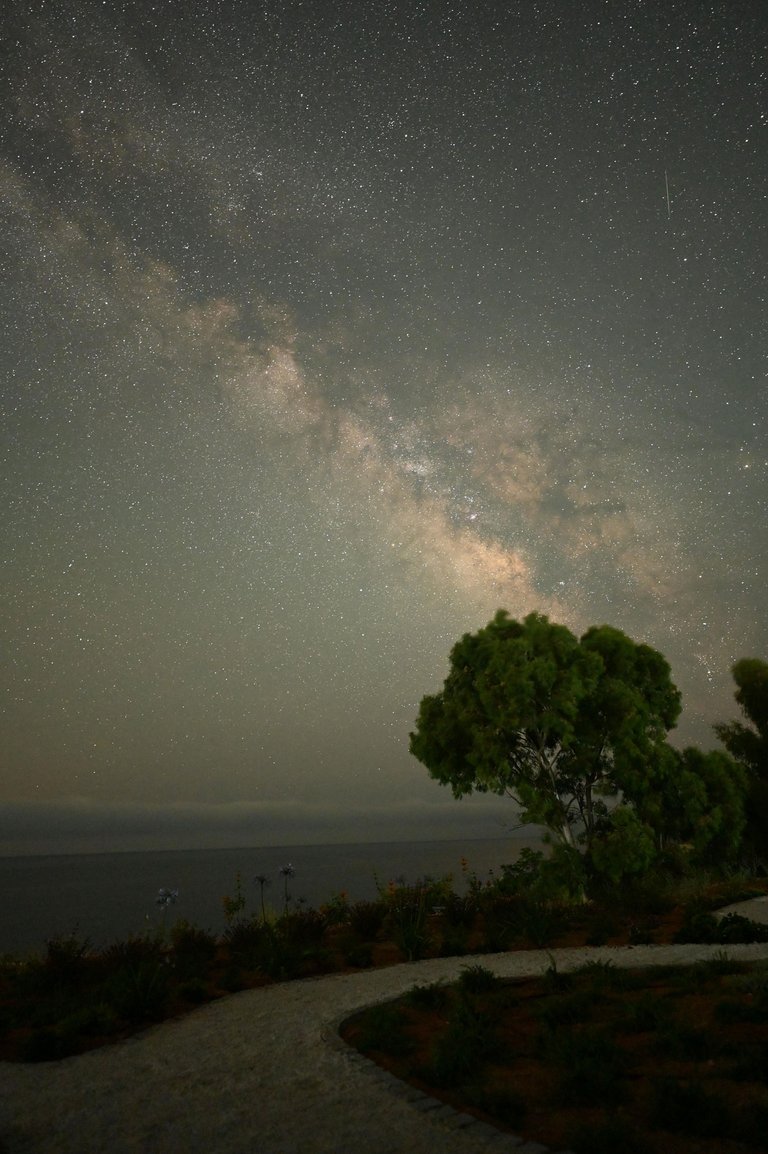
Incredible how many stars are visible there. Picture: Florian Glechner.
| Camera used | Nikon Z6II |
|---|---|
| Lens used | Nikor 20mm F1.8 lens |
| Filter used | none |
| Exposure Time | 20 Seconds |
| Aperture used | F1.8 |
| Focal Length | 20 mm |
| Time | 10:01 pm |
| ISO | 2000 |
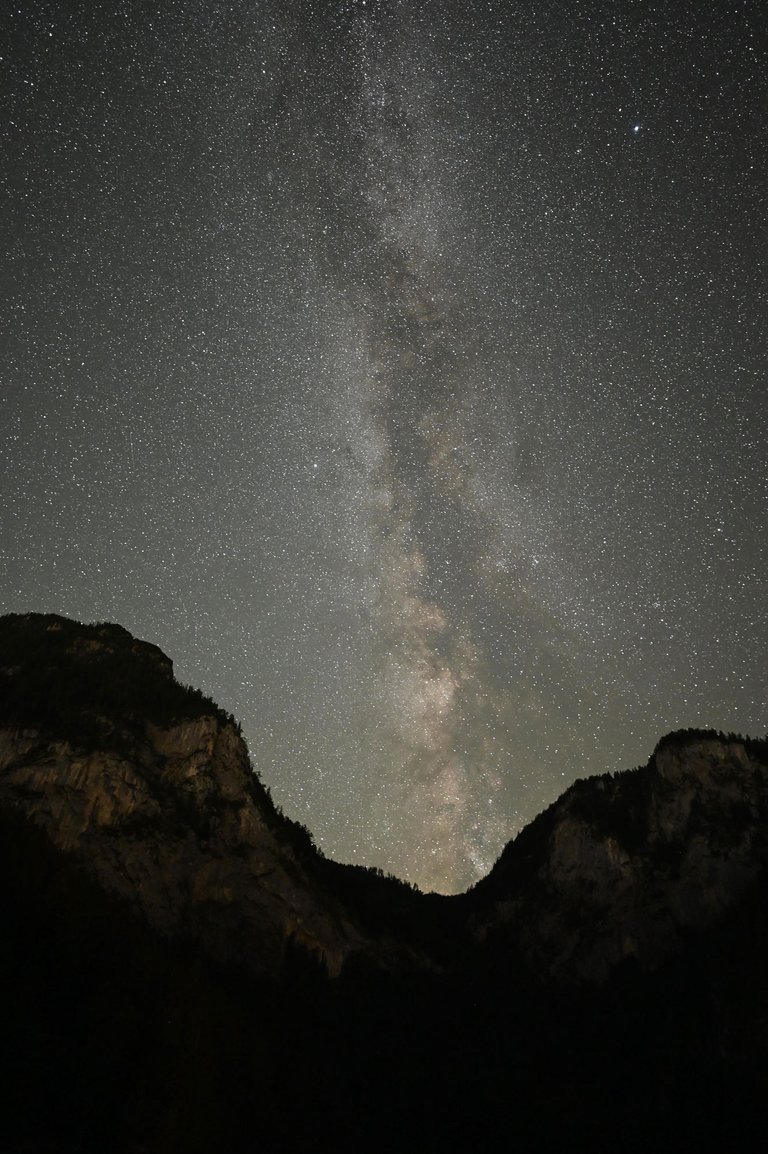
Milky way inbetween two mountain tops. Picture: Florian Glechner.
| Camera used | Nikon Z6II |
|---|---|
| Lens used | Nikor 20mm F1.8 lens |
| Filter used | none |
| Exposure Time | 20 Seconds |
| Aperture used | F1.8 |
| Focal Length | 20 mm |
| Time | 10:01 pm |
| ISO | 2000 |
Thank you for your witness vote!
Have a !BEER on me!
To Opt-Out of my witness beer program just comment STOP below
View or trade
BEER.Hey @florian-glechner, here is a little bit of
BEERfrom @isnochys for you. Enjoy it!Did you know that <a href='https://dcity.io/cityyou can use BEER at dCity game to buy cards to rule the world.
Very nice atmosphere with natural views.
We appreciate your work and your publication has been hand selected by the geography curation team on behalf of the Amazing Nature Community. Keep up the good work!
These are impressive photos. Beautiful and how clearly the Milky Way can be seen despite the light disturbances. Does the camera see more than the naked eye? What effect does the twenty-second exposure time have on this comparison?
Camera sees a lot more than the Eye. I used the 1.8 Aperture of my lens so a lot of light in combination with ISO 2000 sensitivity of the sensor. You cannot see it with the naked eye like this. Then I also enhanced the saturation a bit in photoshop.